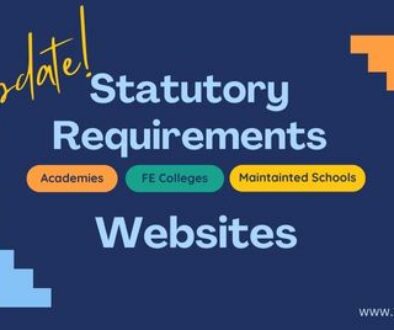Choosing the Right VLE for Your Organisation
There are many guises of an e-learning platform, some open source, some commercial, some fully hosted in the cloud (software as a service) and there are others that simply don’t quite cut it at all. While it has been well established that e-learning initiatives bring tremendous benefits towards education at all levels, it is often a mine field to decide upon an e-learning platform most suitable for your organisation.
There is also very little comprehensive help out there for those looking to invest in a suitable solution that will meet all of their requirements. Through this series of articles, we intend to try shed some light on this subject in hopes that when the time comes for an organisation to make a decision, this article will help them make a valid informed decision.
In recent years, we have seen the emergence of a substantial number of different e-learning products. These include companies with ‘bespoke’ learning platforms (Frog), some major software powerhouses trying to get into the market through rebadged business software (Microsoft with SharePoint-based solutions), some other software companies whose core businesses are based on Management Information System (MIS) for the education sector and other business that publish multimedia learning content are also fast jumping on the band wagon, each introducing their own flavour of an e-learning platform, boasting integration with existing products and contents.
It is no surprise then that one will find e-learning platforms of all shapes and sizes often backed by strong marketing teams each pitching their product against the other with a never ending list of features.
The mix of independent products and ones that claim to integrate well with systems or content already in use makes the task of choosing a product even more complicated. To add to the confusion, solution integrators, managed service providers and broadband consortiums are throwing their weight around, attempting to introduce their own version of e-learning platforms to entice their clients in the name of adding value to their services. Some local education authorities are not helpful either, often with little or none-at-all, in-house capabilities, decision makers have also been known to use a non-education based selection criteria – cost being the main factor, at this point of writing); unsurprisingly chaos ensues.
You Are Not Alone – Lessons to be learnt from the experienced.
It is important to remember that many other organisations have trodden this path and many too have taken the plunge. Be it universities, colleges, schools or training institutions, these organisations often serve as a good reference, whatever product they use. They are more than happy to offer you advice and help with any information you need.
Getting first hand information from actual users will give you a better sense of how the product is going to sit in your organisation. What’s more, you will be talking from the same page, sharing experience and knowledge on the implementation and roll out of such a product as well as issues they may come across. Lastly, you will not have salesman ringing you every other day afterwards.
The Real World
It is very important to look past the glossy brochures and features list and find out how the product will relate to real world teaching and learning processes. How is it going to complement teaching and reinforce learning? Unless you are looking to deliver the entire course online, you will also need to consider how teachers, lecturers and tutors use the learning platform to enhance the delivery of courses combining classroom and online activities. Consider also the students and how easy it will be for them to navigate through the system.
Put yourself in their shoes, see how easy or difficult it is to pick up and master the product, whether for course content delivery or for learning, with little or no training? Are the features logical and intuitive? What you want to avoid is a product that over complicates simple tasks, takes too many steps to create a resource or activity and overwhelm users with technical jargon and unnecessary options. This will undoubtedly kill users’ enthusiasm and you don’t want that happening at the outset.
The True Cost of Ownership
While commercial products that offer integration with their existing lines of software for example student information management software (MIS) already in use in the organisation may seem like a good idea, they often come with a hefty price tag. The often unjustifiably high cost for licensing, technical support, maintenance and training means the total cost of ownership often outweighs all benefits from an integrated system.
Make sure you have all the figures from the software vendor. Take up all the necessary covers and don’t forget to include hidden costs such as hardware maintenance, upgrades and lifecycle management. Using commercial and proprietary product also means that you would need to rely solely on the appointed company to provide any fire fighting support, software patching , fixes and upgrades. Make sure that these are included in the maintenance agreement which would be something you may have to pay on top of the software license, if not ask for their inclusive rates.
Company (Solutions Provider) Sustainability
While independent software companies dealing mainly with e-learning software, may deliver products which are more focused and aligned with education and the teaching and learning methodology, it is often hard to predict how the future of such companies will pan out as the market is becoming more and more crowded and increasingly competitive.
We have seen the abrupt demise of certain software companies leaving the clients with no support, an unfinished or a dead-end product which is quick to lose its relevance. In some cases, the clients will lose their payment for technical support of which they have paid up front. There is no real formula in ensuring that the company’s longevity is sustainable apart from looking at their portfolio of clients and the quality of the product itself. Ask to speak to some of the developers to understand their motivation and enthusiasm for the product, their Product Director to establish the product roadmap and development cycles and to get some feedback, ask for reference sites.
The Right Tool for the Job
While it would be ideal, if a chosen product is able to present you every useful feature possible, the reality is you will find there is not a single product that will do everything and yet do it well. Once you have done your homework, you will have in essence a short list of key features which you can immediately relate to given your teaching experience.
Create a comparison table and highlight these key features. A few obvious ones apart from uploading documents and static contents for students are the ability to create assignments, online assessments, self marking facility, set custom grading system, exporting and reporting facility. Other learning support features that adds a layer of interactivy to the online learning process should also be considered such as discussion forum, messaging, reflective journal, student resource repositories.In considering all these key points, and having a short list of ‘must-have’ features in a VLE, it should then help you outline a selection of available VLEs that may fit the bill.
Look out for my next article on Open Source vs Commercial VLEs
Author: Samuel J. Tan


Teacher and Student Software Toolkit « XELIUM : clarity defined
21 January 2011 @ 10:56 am
[…] Choosing the Right VLE for your Organisation […]